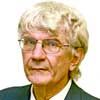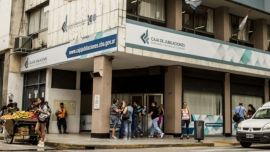Hope springs eternal in the human breast, runs the endlessly repeated Alexander Pope quote, and at regular intervals incurable optimists surface to come up with some good things to come out of the coronavirus pandemic and lockdown, ranging from less carbon emissions last year to more time for sleep. Sometimes these silver linings seem to make light of the monstrous death and destruction but this book rates as perhaps almost an involuntary contribution to that list.
The prologue makes it quite clear that this book would probably never have been written without the pandemic. The idea had been around for a long time – and made explicit during the Coxes’ last annual return to Buenos Aires in 2019 by the Romanian-born writer Alina Diaconú (who reviewed this book in Perfil last month) insisting on the publication of the extraordinary series of coincidences dotting Maud Cox’s life upon hearing of them – but in all likelihood would never have found its way into print if lockdown only a few months later had not left the author with time hanging heavy on her hands.
The underlying concept can already be seen in the title. It is very easy to misread the word “causalidades” as “casualidades” (“coincidences”) because these two Spanish words are almost identical. And the overlap might not be only linguistic, suggests Maud Cox, with hidden causes lurking behind the apparent coincidences – although she never goes as far as categorically stating that there is no such thing as coincidence (as our current veep likes to do at regular intervals).
Her sixth book consists of eight tales of amazing coincidences. The subject matter ranges from the trivial – the Limoges porcelain purchased by an uncle at a Paris flea market being recognised by a Charleston dinner guest almost half a century later as originating from his family – to the dramatic and tragic.
Examples of the latter range from the accidental presence of a teenaged Maud at a murder scene in Mar del Plata in 1946 to the disappearance of Marcos Arocena in 1976 (one of many such cases famously covered by then-Buenos Aires Herald editor Robert Cox). In the latter case the coincidence consists of a Marcos Arocena (not the same one, unfortunately) showing up at the Cox home in Charleston a few years later to learn English. Since the missing youth’s mother Helena died without ever knowing what happened to her son (whose remains were finally identified in 2011), the reader is left wondering which outcome would have been the more poignant – the mother being confronted with her son’s death or going to her grave many years later without knowing that he was alive and well in Charleston.
Other themes range from slavery in Cartagena to the 1912 Sikh immigration to Argentina alongside such specific coincidences as traces of the family ancestor Jonathan Swift (yes, the author of Gulliver’s Travels) showing up at a British pub stopover or the Argentine baby adopted by Boston bankers turning up years later at the same ballet academy as Ruth Cox, the youngest daughter. But better not make this review a spoiler.
If book critics are supposed to criticise, this book does contain a few simple errors – some of the dates are wrong (the 1976 coup was March 24 not 25, Juan Perón died in the July not June of 1974), Cork is in southern, not northwestern Ireland, there is duplication in the family tree on the last page, etc. But this slim volume does not aim to be a history book or a travel guide and to dwell on these cosmetic flaws would be to miss the point completely.
To quote the final sentence – “These tales will continue to be marvellous curiosities while no explanation exists.”
* El misterio de las causalidades, Maud Daverio de Cox, Voria Stefanovsky Editores, 2021, 80 pages.























Comments